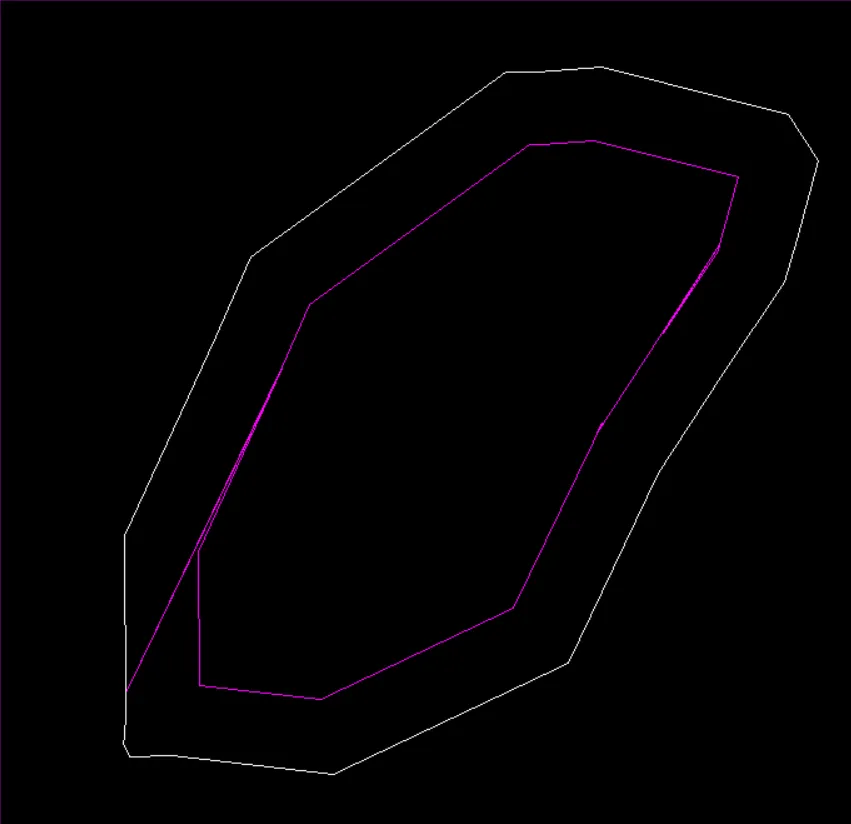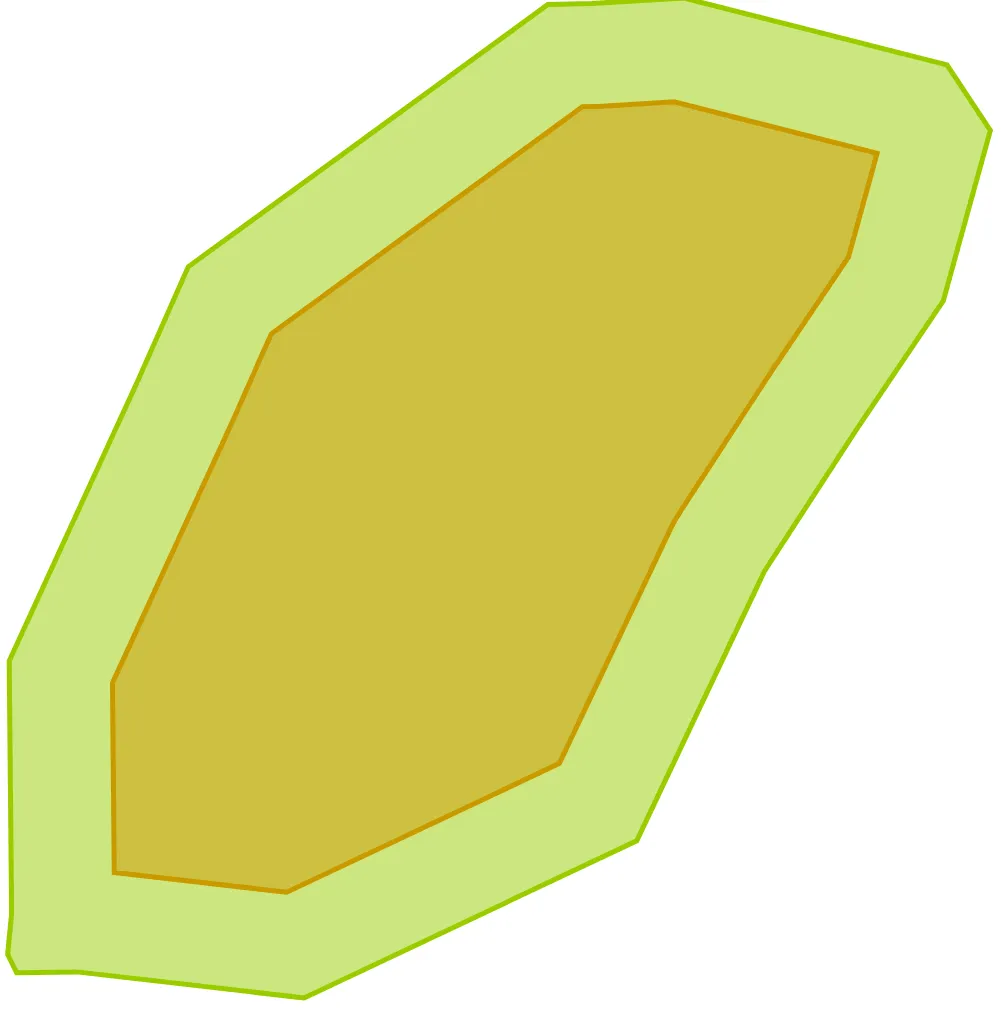我正在使用Boost :: Geometry :: Buffer创建不规则多边形的内部偏移或膨胀。下面的图像显示了一个示例输入和输出。原始多边形以白色显示,偏移多边形以紫色显示。在紫色多边形的右侧有两组多余的线(作为较粗 / 更亮的区域看到),左侧有一根长长的多余尖刺。
这是我用来生成偏移多边形的代码:
Boost是一个很有声望的库,所以我很难相信它的几何API会在一个如此简单的多边形上失败。为什么会出现这些无关的线条?如果需要任何其他信息,我很乐意提供。
示例中使用的多边形非常基本。它缺乏任何对称性,但没有尖锐的转角或锯齿状边缘。输入多边形的原始数据是这些笛卡尔坐标点的列表:
x: 61.2101898, y: 81.9854202
x: 61.3715706, y: 82.0616913
x: 61.4335442, y: 82.1924744
x: 61.4778328, y: 82.2606735
x: 61.5202942, y: 82.3236465
x: 61.5283432, y: 82.3527832
x: 61.5431557, y: 82.4063950
x: 61.5221367, y: 82.4381790
x: 61.3944855, y: 82.4706116
x: 61.3497124, y: 82.4679184
x: 61.3284111, y: 82.4674301
x: 61.1539803, y: 82.3401947
x: 61.1297760, y: 82.2854843
x: 61.0671043, y: 82.1489639
x: 61.0682831, y: 82.0264740
x: 61.0667953, y: 82.0112915
x: 61.0663414, y: 82.0066376
x: 61.0707321, y: 81.9976196
x: 61.0998306, y: 81.9980850
x: 61.2101898, y: 81.9854202
这是我用来生成偏移多边形的代码:
namespace bg = boost::geometry;
typedef bg::model::d2::point_xy<float> BoostPoint;
typedef bg::model::polygon<BoostPoint> BoostPolygon;
typedef bg::model::multi_polygon<BoostPolygon> BoostMultipolygon;
std::vector<BoostPoint> points;
BoostPoint tmpPoint;
BoostPolygon input;
BoostMultipolygon output;
/* currentContour is a pointer to a non-Boost specialized polygon
* structure. It contains a bool indicating clockwise/counterclockwise
* direction and a list of lines, each line defined by two x-y points.
* For each line, point 2 follows point 1 in the clockwise/counterclockwise
* direction of that polygon.
*/
if (currentContour->clockwise) {
for (int line = 0; line < currentContour->lines.size(); line++) {
bg::set<0>(tmpPoint, currentContour->lines[line].x1);
bg::set<1>(tmpPoint, currentContour->lines[line].y1);
points.push_back(tmpPoint);
}
// Add last point to wrap back around to starting point.
bg::set<0>(tmpPoint, currentContour->lines.back().x2);
bg::set<1>(tmpPoint, currentContour->lines.back().y2);
points.push_back(tmpPoint);
}
else {
for (int line = currentContour->lines.size() - 1; line >= 0; line--) {
bg::set<0>(tmpPoint, currentContour->lines[line].x2);
bg::set<1>(tmpPoint, currentContour->lines[line].y2);
points.push_back(tmpPoint);
}
// Add last point to wrap back around to starting point.
bg::set<0>(tmpPoint, currentContour->lines.front().x1);
bg::set<1>(tmpPoint, currentContour->lines.front().y1);
points.push_back(tmpPoint);
}
// Transfer points to polygon object.
bg::assign_points(input, points);
// Declare boost strategies for buffer function.
bg::strategy::buffer::distance_symmetric<double> distance_strategy(-0.05);
bg::strategy::buffer::join_miter join_strategy;
bg::strategy::buffer::end_round end_strategy;
bg::strategy::buffer::point_circle point_strategy;
bg::strategy::buffer::side_straight side_strategy;
// Perform polygon buffering.
bg::buffer(input, output, distance_strategy, side_strategy, join_strategy,
end_strategy, point_strategy);
Boost是一个很有声望的库,所以我很难相信它的几何API会在一个如此简单的多边形上失败。为什么会出现这些无关的线条?如果需要任何其他信息,我很乐意提供。

